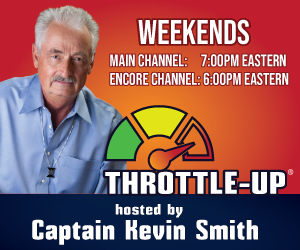Emphasizing the Marines’ new amphibious troop transport is critical to the nation’s crisis response, a top Marine Corps leader told senators during a committee hearing on Capitol Hill Wednesday that Camp Pendleton Marines are being retrained after a series of accidents involving the vehicle, but the request to purchase more still stands.
Assistant Marine Commandant Eric Smith told senators during the Fiscal 2024 budget hearing on readiness with the House Armed Service Committee that the new Amphibious Combat Vehicle recently purchased from BAE Systems – at least 139 are now part of the Marine Corps’ fleet, each costing $5.9 million – is significantly better “in mobility, lethality, protection and safety” than the legacy vehicle it is replacing for transporting troops between ships and the shore and onto land.
But he also outlined for the committee the adjustments in training with the vehicle and mechanical improvements being made following four instances when the troop transport flipped over while maneuvering in surf at Camp Pendleton since its rollout in 2019. There have been no reported injuries in the training accidents.
The ACVs have yet to deploy overseas with a Marine unit after missing a planned debut last year with the 13 Marine Expeditionary Unit.
Despite the issues, Marine leaders are convinced the vehicles are the future of the amphibious fight, Smith said.
Smith explained to senators that the ACVs – several more models are on order from BAE Systems – are operating and handling much differently than their predecessor, the Amphibious Assault Vehicle, which has been the service branch’s most relied-upon vehicle since being introduced to the fleet in 1972. After initial investigations into the training accidents, it was determined the Marines need to be trained to adjust to the new vehicle’s completely different steering system and propellor systems, among other variations, he said.
Those alterations in protocols for training to drive and maintain the vehicle are now in the works at the Southern California base before being introduced across the Corps.
“After several months of dedicated efforts, and the institution (of a special training team) at our Assault Amphibian School, we have a phased plan that will allow our ACV operators to employ the vehicle safely and effectively,” Smith told the senators.
The special unit, officially announced by Smith on Wednesday during the hearing, is headed up by Col. Howard Hall, who from 2011 to 2013 was the commanding officer of the 3rd Assault Amphibian Battalion at Camp Pendleton and has extensive experience in amphibious warfare. Hall and his team have been at Camp Pendleton for more than a month.
“We are clear-eyed about the need to get this right,” Gen. David Berger, commandant of the Marine Corps, said in a statement Wednesday after releasing more information about the new amphibious training team at Camp Pendleton. “Our Marines deserve no less, and our nation depends on it.
“Amphibious operations, including the use of ship-to-shore connectors, are a foundational aspect of the Marine Corps,” he said. “Our Marines will be trained safely and to the highest standard to ensure we remain the nation’s premier expeditionary force in readiness.”
Externally, the older AAVs are flat-bottomed and run on tracks, like a tank, while the new ACV has a V-shaped hull and eight wheels. The two vehicles’ steering and propeller systems are completely different; at 36 tons, the ACV is also about 10 tons heavier. Because of the differences in their design, the vehicles are behaving differently in the surf zone – the area near the shore where waves build and break.
Smith told senators about how the vehicles have flipped in the surf zone but said the new training unit is working to address why that is happening. The problems appear to arise most when the ACVs get turned parallel to the surf line and are struck by large waves; Berger describes it as a “lever effect.”
The ACVs have received good reviews for their performance on land, and Marines who tested them reported finding the vehicles superior to their predecessor. They are also expected to better protect troops inside from a bomb blast.
Marines will first learn in the classroom, officials said, to make sure they have the fundamentals of the vehicles. Building on that, they will move to “highly controlled practical evaluations” in the motor pool before moving into ground-based training events. The new training program will end with evaluations in the water and in the surf zone, which are expected to begin this summer.
Hall said his team is developing a program focused on performance-evaluated measurements associated with the safe operation of the ACV both on land and in water.
“The exceptional intensity and professionalism exhibited by the Marines of the (training team) combined with the coordination and support of leaders at all levels across the Marine Corps is a testament to our commitment to facilitating the ACV transition and leveraging its impressive capabilities,” he said after more details of the program were released, adding that the program will lay a foundation for future Assault Amphibian School and assault amphibian battalion proficiency.
“A critical component of the revised training program is the continuous training and evaluation of ACV Marines, with skills progression benchmarks that evaluate them on their knowledge of both operating and maintaining the vehicle and their ability to then apply that knowledge to real-world operations,” said Capt. Ryan Bruce, a Marine spokesman.
The retooled program will also employ new technologies, including drones, that leaders say should help Marines maneuver the vehicles by providing better surf condition reports than are presently available.
Berger has a roadmap for a quicker and lighter Marine Corps, returning it to its amphibious roots. He envisions the potential for island-hopping campaigns and other amphibious operations with the Navy in the Indo-Pacific, an area military leaders expect will be particularly contested in the coming years.
“In these times of increasing complexity and uncertainty, the nation needs one force, maintained at the highest levels of readiness, that can respond to the crises that few saw coming,” Berger said in testimony to senators, in which he pressed for more funding for more amphibious ships. “We are that force.”
___
© 2023 MediaNews Group, Inc
Distributed by Tribune Content Agency, LLC






